The truce, brokered by Russia last week, stipulated that Armenia hand over control of some areas its holds outside Nagorno-Karabakh’s borders to Azerbaijan. Aghdam is the first one to be turned over.
“Today, with a feeling of endless pride, I am informing my people about the liberation of Aghdam,” Azerbaijani President Ilham Aliyev said in an address to the nation. “Aghdam is ours!”
Crowds of people carrying national flags gathered in the Azerbaijani capital, Baku, to celebrate the handover of the Aghdam region.
Nagorno-Karabakh lies within Azerbaijan but has been under the control of ethnic Armenian forces backed by Armenia since a separatist war there ended in 1994. That war left not only Nagorno-Karabakh itself but substantial surrounding territory in Armenian hands.
Heavy fighting that flared up Sept. 27 marked the biggest escalation of the decades-old conflict between the two ex-Soviet nations in over a quarter-century, killing hundreds and possibly thousands of people.
The truce last week halted the violence after several failed attempts to establish a lasting cease-fire. It came two days after Azerbaijan, which had made significant advances, announced it had seized the strategically important city of Shusha.
Aliyev on Friday noted that Azerbaijan is taking over the Aghdam region “without a single shot (fired) or losses (suffered),” and called it a “great political success" that wouldn't have been possible without military gains.
“Azerbaijan was able to achieve what it wanted on the political arena after having won a brilliant victory on the battlefield,” the president said.
The agreement, celebrated as a victory in Azerbaijan, has left many Armenians bitter. Mass protests erupted in the Armenian capital, Yerevan, immediately after the peace deal was announced last week, and many ethnic Armenians have been leaving the territories that are to be handed over to Azerbaijan, setting their houses on fire in a bitter farewell gesture.
Although regaining the region is a triumph for Azerbaijan, the joy of returning is shot through with grief and anger. The region’s main city, Aghdam, was once home to 50,000, known for its white homes and an elaborate three-story teahouse, but it is so ruined that it’s sometimes called the “Hiroshima of the Caucasus.”
After the population was driven out in 1993 by fighting, they were followed by Armenian pillagers who stripped the city bare, seeking both booty and construction materials. One of the city’s happier eccentricities, the bread museum, is in ruins. The cognac factory is gone.
Today, the only structurally whole building is the mosque; from the top of the elaborately patterned minarets, the view is of a vast expanse of jagged concrete and houses reduced to shells, all encroached upon by a quarter-century’s growth of vegetation.
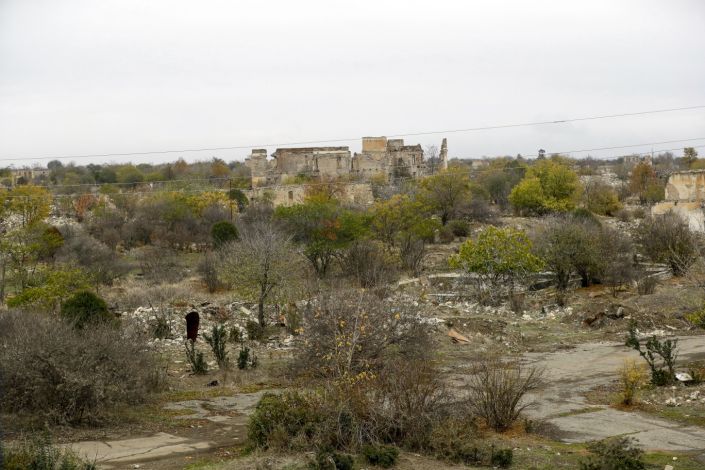
A view of a vast expanse of jagged concrete and houses reduced to shells in Agdam, prior to the Azerbaijani forces being handed control in the separatist region of Nagorno-Karabakh, Thursday, Nov. 19, 2020. Although regaining Agdam is a triumph for Azerbaijan, the joy of returning is shot through with grief and anger. What was once a notably pleasing city of 50,000 known for its white homes and an elaborate three-story teahouse is so ruined that it's sometimes called the "Hiroshima of the Caucasus."

Azerbaijanis celebrate entry of troops in Nagorno-Karabakh's Aghdam region in Baku, Azerbaijan, Friday, Nov. 20, 2020. Units of the Azerbaijani army on Friday morning entered the Aghdam region, a territory ceded by Armenian forces in a cease-fire agreement that ended six weeks of heavy fighting over the separatist region of Nagorno-Karabakh, Azerbaijan's Defense Ministry said.

Azerbaijanis celebrate entry of troops in Nagorno-Karabakh's Aghdam region in Baku, Azerbaijan, Friday, Nov. 20, 2020. Units of the Azerbaijani army on Friday morning entered the Aghdam region, a territory ceded by Armenian forces in a cease-fire agreement that ended six weeks of heavy fighting over the separatist region of Nagorno-Karabakh, Azerbaijan's Defense Ministry said.
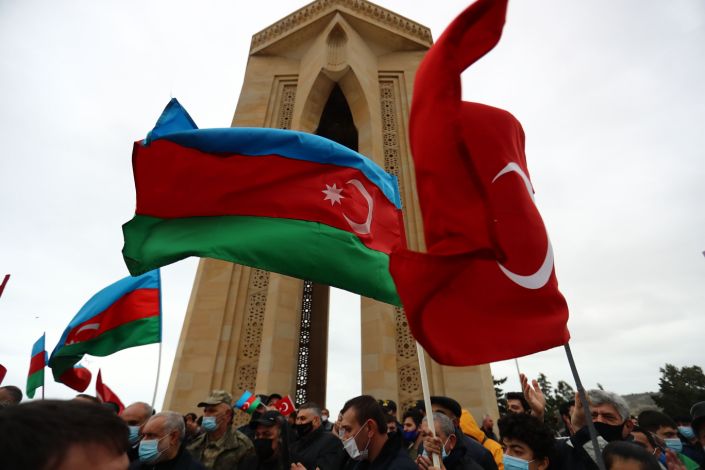
Azerbaijanis wave national flags as they celebrate entry of troops in Nagorno-Karabakh's Aghdam region in Baku, Azerbaijan, Friday, Nov. 20, 2020. Units of the Azerbaijani army on Friday morning entered the Aghdam region, a territory ceded by Armenian forces in a cease-fire agreement that ended six weeks of heavy fighting over the separatist region of Nagorno-Karabakh, Azerbaijan's Defense Ministry said.
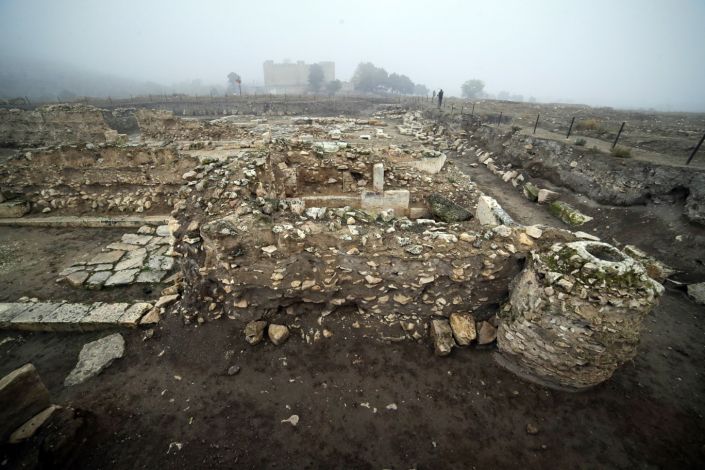
FILE - In this file photo taken on Wednesday, Nov. 18, 2020, a journalist looks at a ruined Tigranakert, Armenian city dating back to the Hellenistic period, in the separatist region of Nagorno-Karabakh. In marked contrast to the thorough destruction of Agdam city, ethnic Armenians have taken assiduous care of one of their major historical sites in the province. The foundations of ancient Tigranakert, some two millennia old, have undergone archaeological excavation and some of what has been found placed in an 18th century fortress.
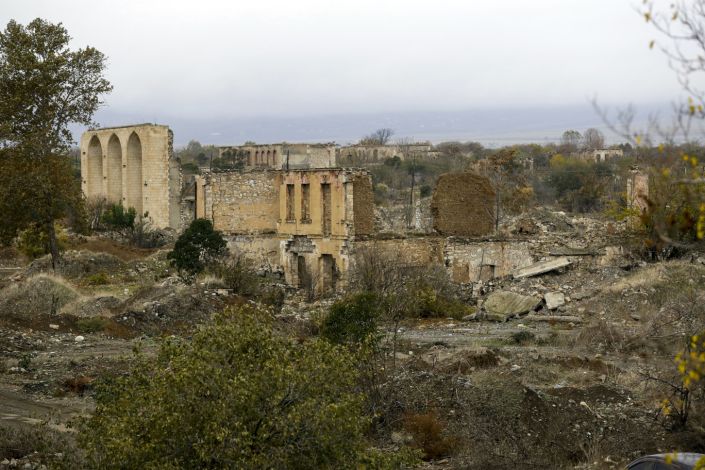
A view of a vast expanse of jagged concrete and houses reduced to shells in Agdam, prior to the Azerbaijani forces being handed control in the separatist region of Nagorno-Karabakh, Thursday, Nov. 19, 2020. Although regaining Agdam is a triumph for Azerbaijan, the joy of returning is shot through with grief and anger. What was once a notably pleasing city of 50,000 known for its white homes and an elaborate three-story teahouse is so ruined that it's sometimes called the "Hiroshima of the Caucasus."
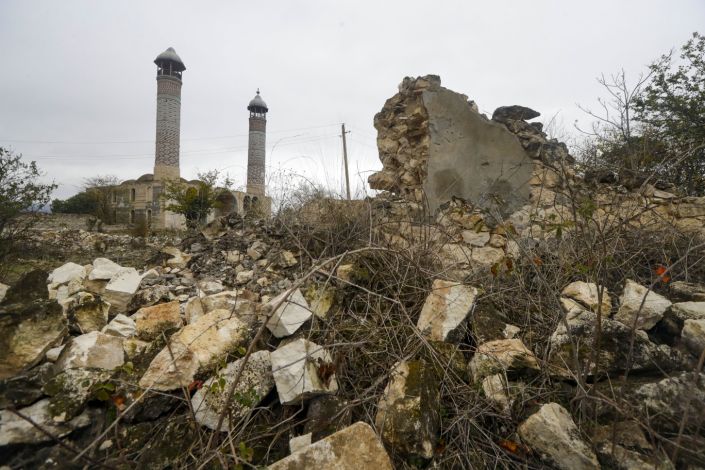
The Aghdam Mosque is seen through ruins in Agdam, prior to the Azerbaijani forces being handed control in the separatist region of Nagorno-Karabakh, Thursday, Nov. 19, 2020. The mosque itself is an especial sore point. In the years after the local population was driven out the mosque was turned into a stable for cattle and swine. Although ethnic Armenian forces tried to keep outsiders away from Aghdam, some camera-bearing visitors slipped in and their photos of the mosque's defilement outraged Azerbaijanis.
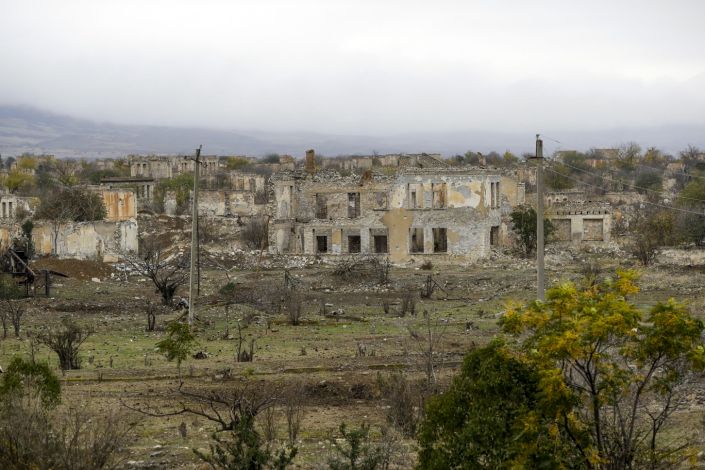
A view of a vast expanse of jagged concrete and houses reduced to shells in Agdam, prior to the Azerbaijani forces being handed control in the separatist region of Nagorno-Karabakh, Thursday, Nov. 19, 2020. Although regaining Agdam is a triumph for Azerbaijan, the joy of returning is shot through with grief and anger. What was once a notably pleasing city of 50,000 known for its white homes and an elaborate three-story teahouse is so ruined that it's sometimes called the "Hiroshima of the Caucasus."
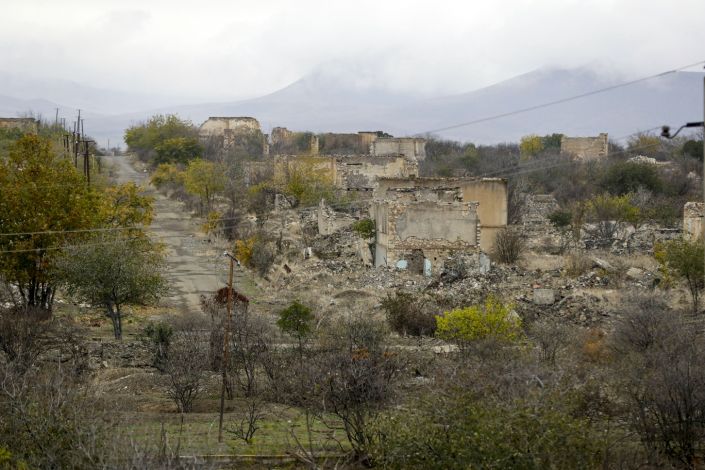
A view of a vast expanse of jagged concrete and houses reduced to shells in Agdam, prior to the Azerbaijani forces being handed control in the separatist region of Nagorno-Karabakh, Thursday, Nov. 19, 2020. Although regaining Agdam is a triumph for Azerbaijan, the joy of returning is shot through with grief and anger. What was once a notably pleasing city of 50,000 known for its white homes and an elaborate three-story teahouse is so ruined that it's sometimes called the "Hiroshima of the Caucasus."
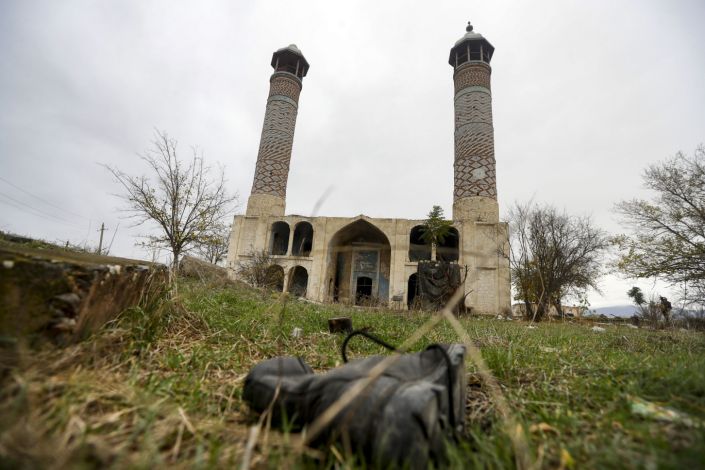
A military boot lies on the grass in front of the Aghdam Mosque in Agdam, prior to the Azerbaijani forces being handed control in the separatist region of Nagorno-Karabakh, Thursday, Nov. 19, 2020. The mosque itself is an especial sore point. In the years after the local population was driven out the mosque was turned into a stable for cattle and swine. Although ethnic Armenian forces tried to keep outsiders away from Aghdam, some camera-bearing visitors slipped in and their photos of the mosque's defilement outraged Azerbaijanis.
































